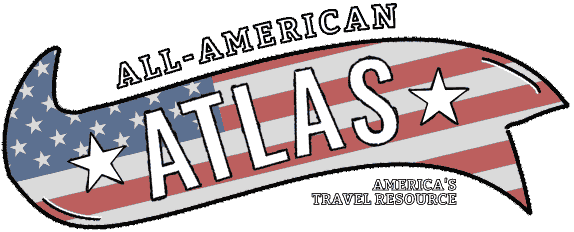From the Mall of America to 10,000 Lakes, if you’ve come wondering, “what is Minnesota famous for?” or “what is Minnesota known for?” then you’ve come to the right place!
I’ve traveled extensively around the USA, and I can tell you that Minnesota is a fascinating state with everything from the busy streets of Minneapolis to cozy lakeside cabins.
It’s a place of football fandom, of Midwest culture, and of ice hockey as a way of life.
Whether you’re just visiting or you’re a local wanting to learn more about your state, read on to find out what foods Minnesota is famous for, what people Minnesota is famous for, and so many more things that Minnesota is known for!
1, 10,000 Lakes

Minnesota’s nickname as the “Land of 10,000 Lakes” is well-deserved.
The state is home to a vast network of lakes, from small ponds to larger bodies of water like Lake Minnetonka, Mille Lacs Lake, and Leech Lake.
These lakes offer recreational opportunities like fishing, boating, and swimming, making them a focal point of outdoor activities for both residents and tourists.
2. Minneapolis
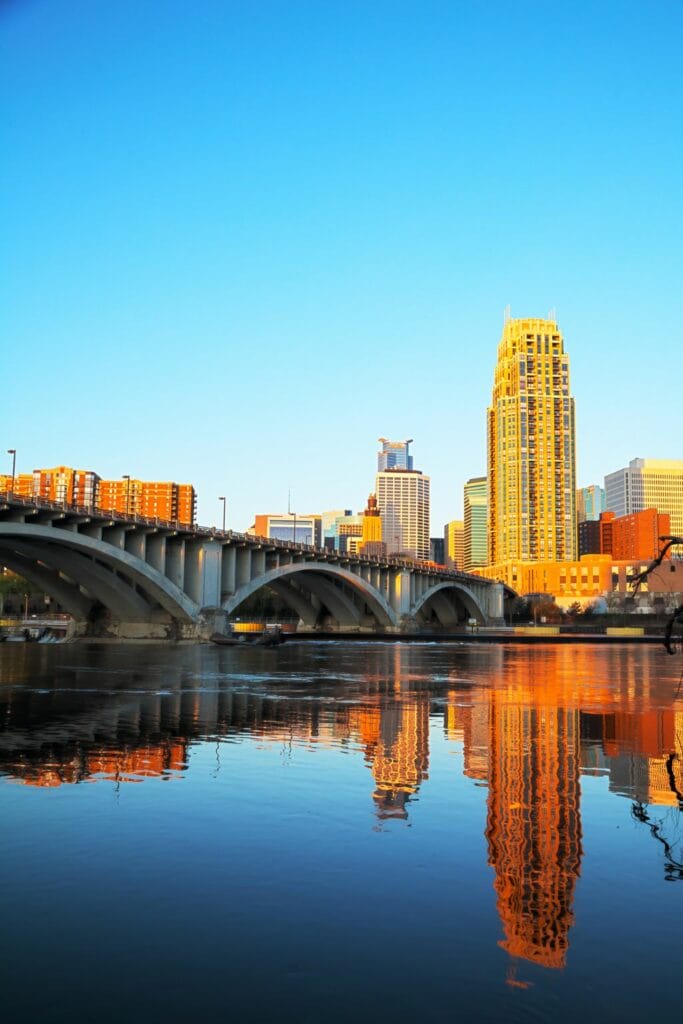
One half of the Twin Cities, Minneapolis is a dynamic metropolis known for its thriving arts and culture scene.
The city is home to numerous theaters, galleries, and music venues, including the historic Guthrie Theater and the Walker Art Center.
The Uptown neighborhood is known for its hip atmosphere and trendy shops, while Downtown Minneapolis boasts modern skyscrapers and a bustling business district.
3. St. Paul
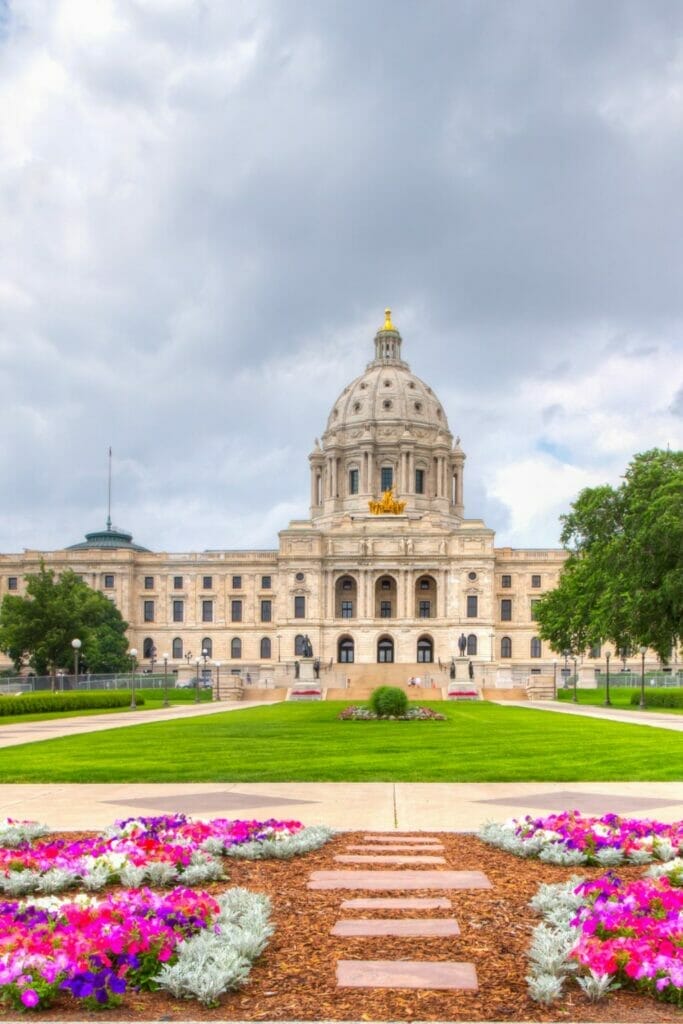
Minnesota’s capital city, St. Paul, is characterized by its historic architecture and cultural landmarks.
The Cathedral of Saint Paul, with its magnificent dome, is a prominent feature of the city’s skyline.
St. Paul is also known for hosting the annual Winter Carnival, a celebration of winter with ice sculptures, parades, and other festivities.
The city’s neighborhoods exude a sense of community, with tree-lined streets and charming houses.
4. Mall of America

Situated in Bloomington, the Mall of America is a colossal shopping and entertainment complex that attracts millions of visitors annually.
With over 500 stores, an indoor amusement park called Nickelodeon Universe, an aquarium, and a mini-golf course, the mall offers a wide range of experiences under one roof.
5. Prince

Born and raised in Minneapolis, Prince Rogers Nelson, simply known as Prince, left an indelible mark on the music industry.
As a singer, songwriter, and multi-instrumentalist, Prince’s music defied genre boundaries, encompassing elements of rock, pop, funk, and R&B.
His albums like “Purple Rain” and “Sign o’ the Times” are considered classics, and his flamboyant style and innovative music videos set new standards for artistic expression.
6. Vikings Football

The Minnesota Vikings are a prominent NFL team based in Minneapolis.
With a passionate fan base, the team has a storied history that includes memorable players like Fran Tarkenton, Adrian Peterson, and Randy Moss.
The Vikings’ iconic purple and gold colors and the blowing of the Gjallarhorn (a Viking horn) before home games are recognizable symbols of the team’s identity.
7. Boundary Waters Canoe Area Wilderness
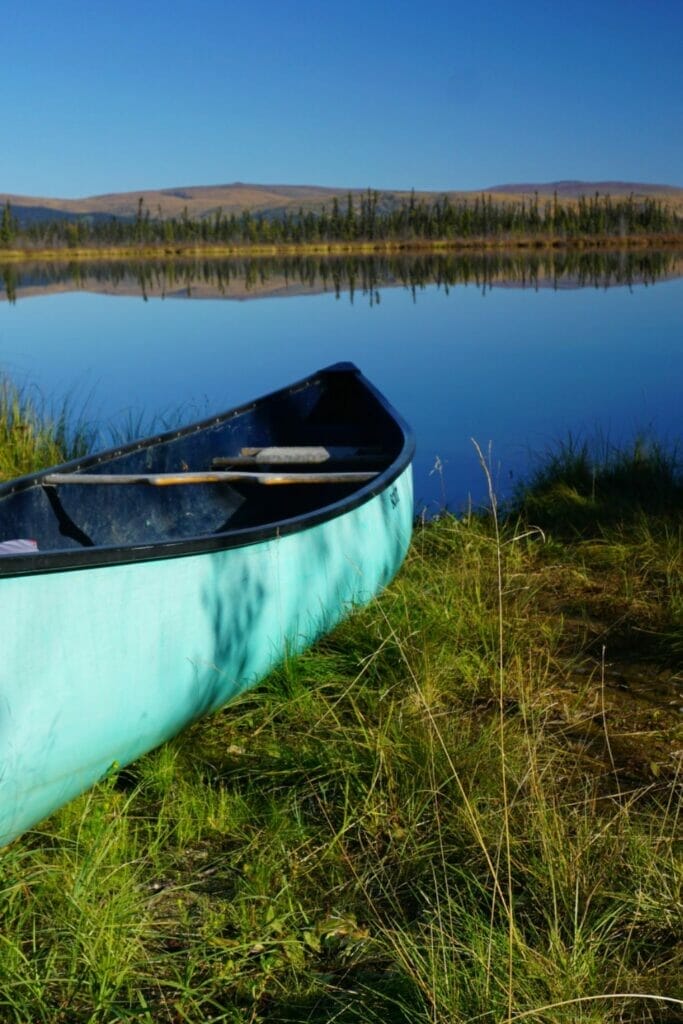
This pristine wilderness area covers over a million acres of untouched forests, pristine lakes, and interconnected waterways in northeastern Minnesota.
It’s a haven for outdoor enthusiasts seeking solitude and natural beauty.
The Boundary Waters offer unparalleled opportunities for canoeing, kayaking, camping, fishing, and wildlife viewing.
8. Scandinavian Heritage
Minnesota’s strong Scandinavian heritage is rooted in the immigration waves of the 19th and early 20th centuries.
Communities with Swedish, Norwegian, Danish, and Finnish roots have left their mark on the state’s culture, architecture, and traditions.
Festivals like the Svenskarnas Dag (Swedish Heritage Day) and Norsk Høstfest (Norwegian Harvest Festival) celebrate these ancestral connections with traditional food, music, and folk dances.
9. Lakeside Cabins and Resorts
Minnesota’s abundance of lakes has given rise to a cherished tradition of lakeside cabins and resorts.
These rustic getaways offer a chance to disconnect from urban life and immerse oneself in nature.
From fishing cabins to luxurious lakeside lodges, these retreats provide a serene environment for relaxation and recreation.
10. Cold Winters

Minnesota’s reputation for cold winters is a defining aspect of life in the state.
The winters here are characterized by heavy snowfall, icy temperatures, and frozen lakes.
While these conditions might deter some, they’ve also inspired unique activities that take advantage of the cold.
Ice fishing is a popular pastime, with enthusiasts drilling holes in frozen lakes to catch fish below.
Snowmobiling and cross-country skiing offer ways to enjoy the snowy landscape.
11. State Fair

The Minnesota State Fair is an annual event that draws massive crowds from around the region.
Held in Falcon Heights near St. Paul, it’s one of the largest state fairs in the United States.
The fair is renowned for its diverse array of foods, including classic favorites like cheese curds, corn dogs, and Sweet Martha’s Cookies.
Concerts, carnival rides, agricultural displays, and competitions create a lively atmosphere.
12. Medical and Healthcare Industry

The Mayo Clinic, headquartered in Rochester, is a world-famous medical institution known for its exceptional patient care and groundbreaking medical research.
Founded by the Mayo family in the late 19th century, the clinic has earned a reputation for innovation and expertise in various medical fields.
13. Educational Institutions
Minnesota is home to a range of prestigious educational institutions, including the University of Minnesota.
The University’s Twin Cities campus is renowned for its academic programs, research contributions, and vibrant campus life.
It’s one of the largest public research universities in the United States.
14. Mississippi River
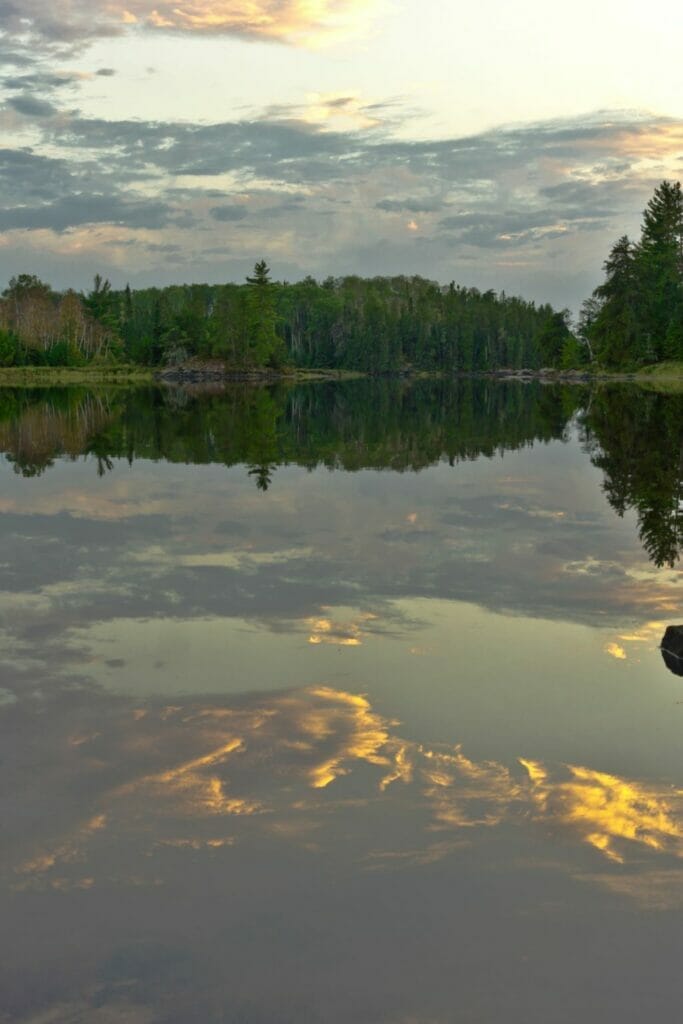
The Mississippi River, one of the longest and most iconic rivers in the world, forms part of Minnesota’s western border.
The river’s flow through the state brings opportunities for recreation, scenic views, and a connection to a historic waterway.
The river’s role in transportation and trade has shaped the development of communities along its banks.
15. North Shore
The North Shore of Lake Superior is a rugged and breathtaking stretch of coastline that offers stunning views of the largest freshwater lake in North America.
The shoreline is characterized by rocky cliffs, dense forests, and numerous waterfalls, such as the iconic Gooseberry Falls.
16. Ice Hockey

Ice hockey holds a special place in Minnesota’s sports culture.
The state’s cold climate is conducive to frozen ponds and rinks, making it a natural breeding ground for hockey enthusiasts.
Minnesota produces a significant number of talented hockey players who have gone on to excel in the NHL and on the international stage.
17. Wilderness and National Parks
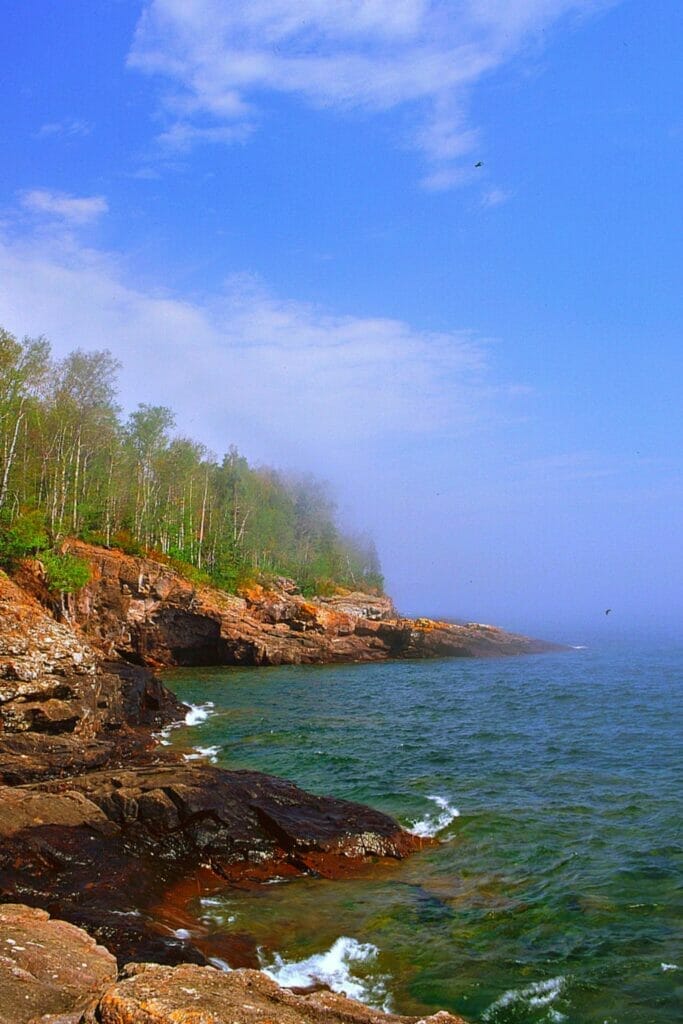
In addition to the Boundary Waters Canoe Area Wilderness, Minnesota is home to several other wilderness areas and national parks.
Voyageurs National Park, situated near the Canadian border, offers an interconnected network of lakes and waterways perfect for boating and exploration.
Isle Royale National Park, located in Lake Superior, is known for its rugged beauty and unique ecosystem.
18. Superior Hiking Trail
Stretching over 300 miles along the North Shore of Lake Superior, the Superior Hiking Trail offers hikers a chance to traverse diverse landscapes, from forests to ridges and waterfalls.
The trail provides access to some of the most stunning vistas in the state, including panoramas of Lake Superior.
19. Fishing

Minnesota’s reputation as a fishing haven is well-deserved.
The state’s lakes and rivers are teeming with a variety of fish species, making it a paradise for anglers.
Walleye, northern pike, muskie, and bass are among the sought-after catches.
Fishing is not just a sport but a way of life for many Minnesotans, with ice fishing in winter and open-water fishing in summer serving as beloved traditions.
20. Duluth

Positioned on the western tip of Lake Superior, Duluth is a charming city known for its maritime heritage and natural beauty.
The Aerial Lift Bridge, a Duluth landmark, lifts to allow ships to pass underneath.
The city’s waterfront features parks, scenic overlooks, and the Lakewalk, a paved trail that hugs the shoreline.
21. Minnesota Twins Baseball

The Minnesota Twins are a Major League Baseball team based in Minneapolis.
The franchise has a storied history, with two World Series championships and numerous playoff appearances.
The Twins’ home games are played at Target Field, a modern stadium known for its fan-friendly amenities and views of the Minneapolis skyline.
22. Iron Range
The Iron Range region of northeastern Minnesota has played a significant role in the state’s history due to its iron mining industry.
The region’s mines provided the raw materials that fueled industrial growth and infrastructure development in the United States.
23. MSP Airport
The Minneapolis-Saint Paul International Airport (MSP) is a major hub for air travel, connecting passengers to destinations across the globe.
As one of the busiest airports in the United States, MSP offers a wide range of services, amenities, and flight options.
24. Craft Brewing
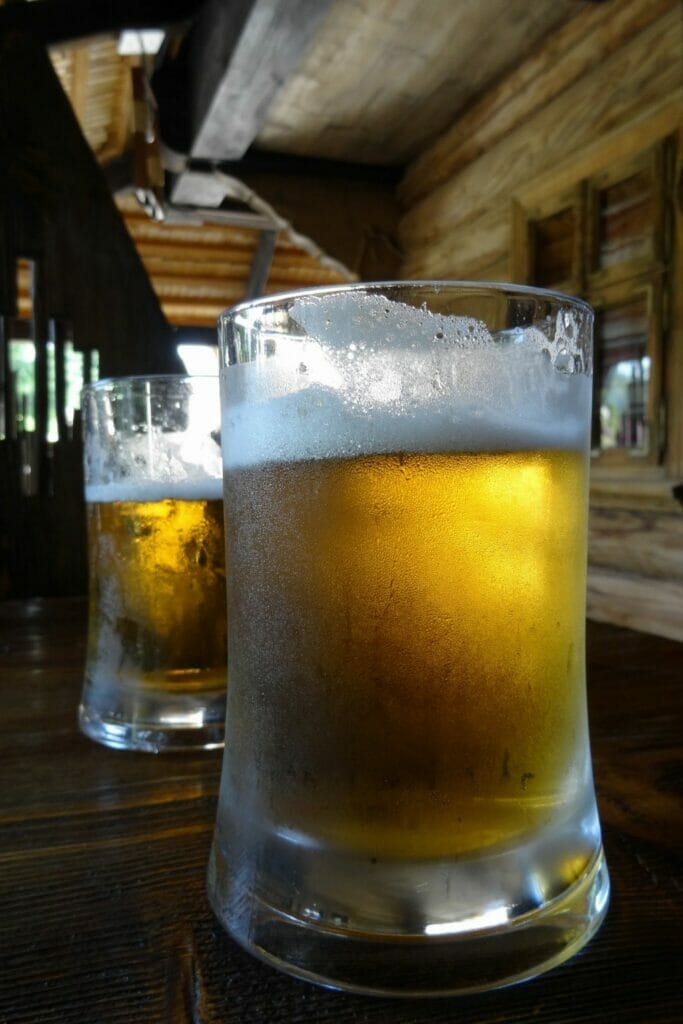
Minnesota’s craft brewing scene has experienced significant growth in recent years, with breweries of all sizes producing a diverse array of beer styles.
From hoppy IPAs to rich stouts and innovative experimental brews, the state’s breweries cater to a wide range of tastes.
25. Lutheranism

Minnesota has a rich tradition of Lutheranism, reflecting the influence of Scandinavian immigrants who settled in the state.
Lutheranism holds a strong presence in religious institutions and cultural life.
The Evangelical Lutheran Church in America (ELCA) is one of the largest Lutheran denominations in the United States, and its headquarters is located in Chicago and adjacent to the campus of Luther Seminary in St. Paul.
26. Great Lakes Shipping
The Duluth-Superior port, situated on Lake Superior, serves as a key gateway for Great Lakes shipping.
The port’s strategic location allows for the transportation of goods between the Great Lakes and the rest of the world.
27. Judy Garland
Judy Garland, born Frances Ethel Gumm in Grand Rapids, Minnesota, became a legendary actress and singer.
She gained fame for her role as Dorothy Gale in “The Wizard of Oz” and went on to have a successful career in Hollywood.
Garland’s performances on screen and stage left an enduring impact on the entertainment industry, and her tumultuous life story has continued to captivate audiences.
28. Paul Bunyan and Babe the Blue Ox
Paul Bunyan and Babe the Blue Ox are larger-than-life folklore characters that have become symbols of American mythology.
Minnesota has embraced these figures as part of its cultural heritage, with statues and monuments dedicated to them.
Paul Bunyan is depicted as a giant lumberjack with exaggerated feats of strength, while Babe the Blue Ox is his loyal companion.
29. Minnesota Orchestra

The Minnesota Orchestra, based in Minneapolis, is a world-renowned symphony orchestra known for its exceptional performances and recordings.
Founded in 1903, the orchestra has a rich history of touring, collaborations with renowned conductors and soloists, and a commitment to musical excellence.
30. Chain of Lakes
Minneapolis boasts a unique feature with its Chain of Lakes—a series of interconnected urban lakes that include Lake Harriet, Lake Calhoun (now Bde Maka Ska), Lake of the Isles, and Cedar Lake.
These lakes provide opportunities for various outdoor activities, from swimming and paddleboarding to jogging and picnicking.
31. Scenic Drives
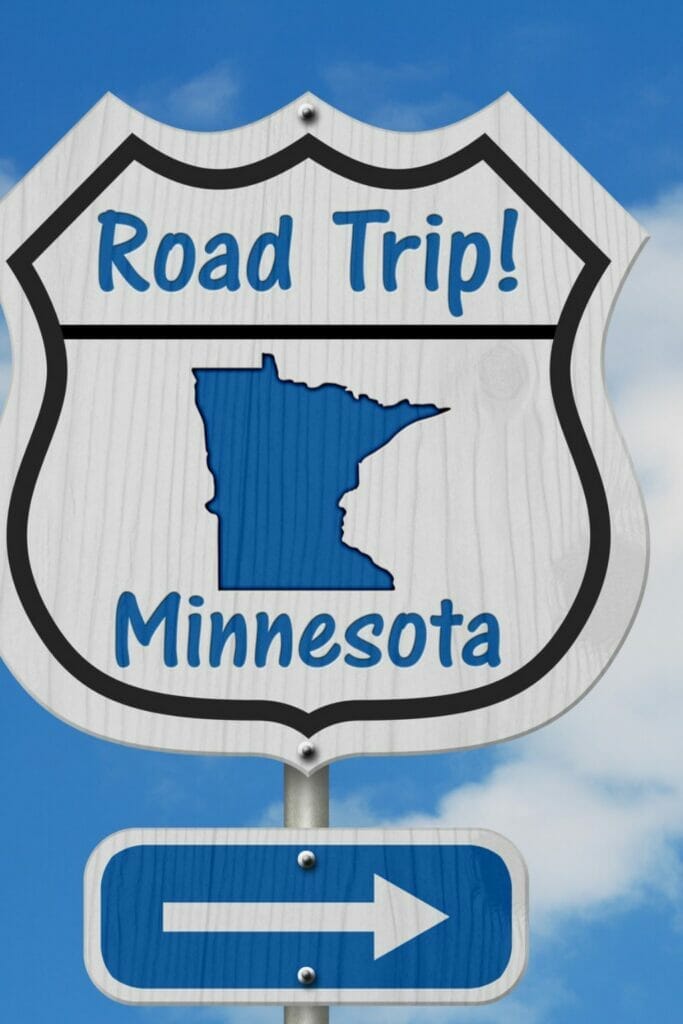
Minnesota offers a plethora of scenic drives that showcase the state’s diverse landscapes and natural beauty.
The North Shore Scenic Drive along Lake Superior’s shoreline provides stunning vistas and access to state parks and waterfalls.
The Great River Road follows the Mississippi River, passing through charming river towns and offering breathtaking overlooks.
32. Cultural Diversity

Minnesota’s population is marked by its cultural diversity, with communities representing a wide range of ethnic backgrounds and traditions.
The Twin Cities, in particular, reflect this diversity through neighborhoods, cultural festivals, and restaurants that offer cuisine from around the world.
33. Lutefisk Dinners
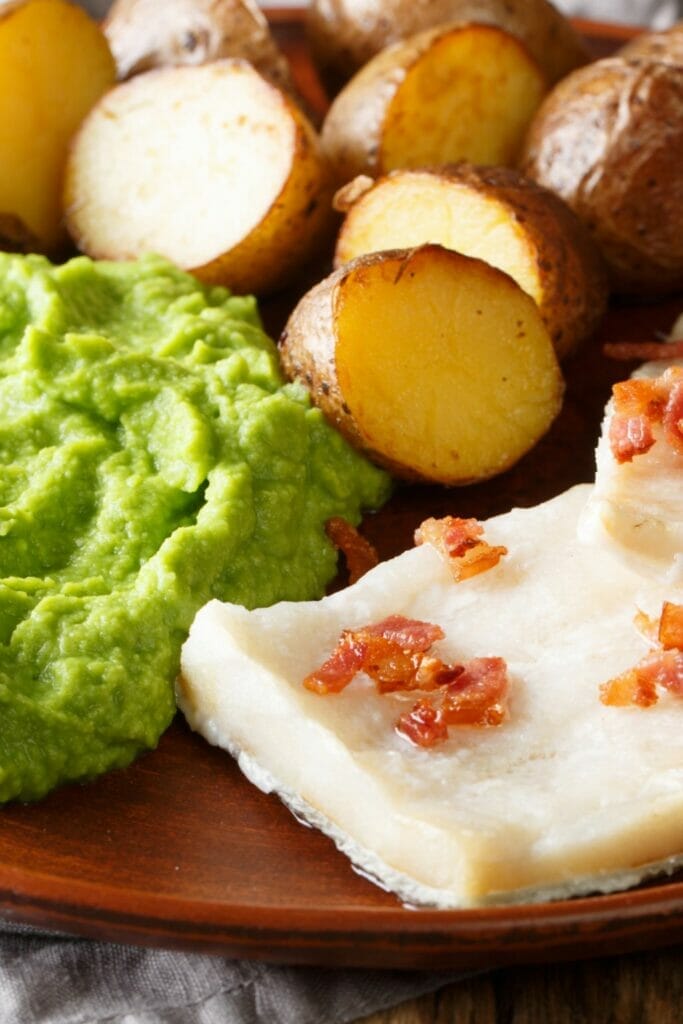
Lutefisk, a traditional Scandinavian dish, has become a hallmark of Minnesota’s cultural heritage.
The dish consists of dried whitefish (usually cod) reconstituted in a lye solution and then prepared for consumption.
Lutefisk dinners are often organized by Scandinavian communities as festive gatherings, where the dish is served alongside other traditional foods like lefse (a Norwegian flatbread) and meatballs.
Want to know what things the other US states are known for? Check out our other guides!
- Interesting Things Alabama is Known For
- Interesting Things Alaska is Known For
- Interesting Things Arizona is Known For
- Interesting Things Arkansas is Known For
- Interesting Things California is Known For
- Interesting Things Colorado is Known For
- Interesting Things Connecticut is Known For
- Interesting Things Delaware is Known For
- Interesting Things Florida is Known For
- Interesting Things Georgia is Known For
- Interesting Things Hawaii is Known For
- Interesting Things Idaho is Known For
- Interesting Things Illinois is Known For
- Interesting Things Indiana is Known For
- Interesting Things Iowa is Known For
- Interesting Things Kansas is Known For
- Interesting Things Kentucky is Known For
- Interesting Things Louisiana is Known For
- Interesting Things Maine is Known For
- Interesting Things Maryland is Known For
- Interesting Things Massachusetts is Known For
- Interesting Things Michigan is Known For
- Interesting Things Mississippi is Known For
- Interesting Things Missouri is Known For
- Interesting Things Montana is Known For
- Interesting Things Nebraska is Known For
- Interesting Things Nevada is Known For
- Interesting Things New Hampshire is Known For
- Interesting Things New Jersey is Known For
- Interesting Things New Mexico is Known For
- Interesting Things New York is Known For
- Interesting Things North Carolina is Known For
- Interesting Things North Dakota is Known For
- Interesting Things Ohio is Known For
- Interesting Things Oklahoma is Known For
- Interesting Things Oregon is Known For
- Interesting Things Pennsylvania is Known For
- Interesting Things Rhode Island is Known For
- Interesting Things South Carolina is Known For
- Interesting Things South Dakota is Known For
- Interesting Things Tennessee is Known For
- Interesting Things Texas is Known For
- Interesting Things Utah is Known For
- Interesting Things Vermont is Known For
- Interesting Things Virginia is Known For
- Interesting Things Washington is Known For
- Interesting Things West Virginia is Known For
- Interesting Things Wisconsin is Known For
- Interesting Things Wyoming is Known For
Get the All-American Travel Secrets!
Don't miss out on America's hidden gems!
